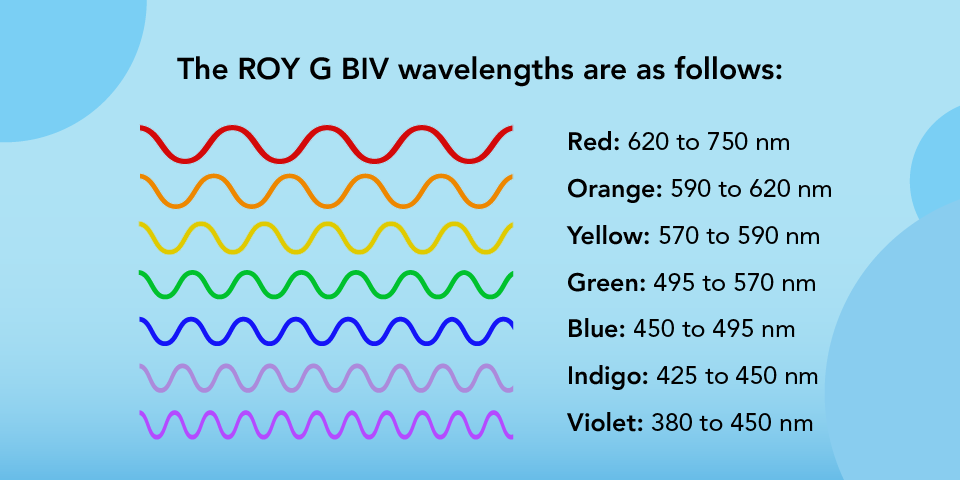
Isaac Newton conducted several studies using light, which led to the discovery of the rainbow. He found that passing white light through a prism gets refracted into many hues. White light is not white — it has the ROY G BIV sequence. In other words, the colors of our rainbow make unseen light visible. It is, therefore, apparent to the human eye.
The various wavelengths of each hue in the visible light spectrum account for the rainbow colors' arrangement, represented by the letters ROY G BIV. Thus, the longest wavelength is red, which has a wavelength of around 700 nm, and the shortest wavelength is violet, which has a wavelength of about 380 nm. As a result, as the various colors exit the prism, they fracture at a certain angle, producing a rainbow of hues.
While pioneering the concept of a light spectrum, Sir Isaac Newton divided it into seven colors, including indigo. This inclusion stemmed partly from the cultural significance of indigo as a prevalent dye at the time. Interestingly, the categorization of color is subjective and culturally influenced, with human perception grouping a continuous spectrum into distinct bands for easier comprehension. Newton's choice of seven colors was also likely influenced by the prevailing belief in the significance of the number seven.
The seven colors of the rainbow are:
- Red
- Orange
- Yellow
- Green
- Blue
- Indigo
- Violet
Each hue is distinct in terms of frequency measurements and the values and meanings that society assigns to it.
Frequency and Exact Color Measurements of the Rainbow
Light travels in waves— its frequency is the number of wavelengths passing a given point each second—a shorter wavelength results in a higher frequency and vice versa. Humans can see light between 400 and 700 nanometers (nm) — the visible spectrum. Because each color has a different wavelength and frequency, each light color separates and becomes visible when passing through a prism.

The ROY G BIV wavelengths are as follows:
- Violet: 380 to 450 nm
- Blue: 450 to 495 nm
- Green: 495 to 570 nm
- Yellow: 570 to 590 nm
- Orange: 590 to 620 nm
- Red: 620 to 750 nm
What Does the Order of the Colors of the Rainbow Mean?
The rainbow's color order is ROY G BIV. Red has the lowest frequency at the top of the arc, and violet has the highest frequency at the bottom. When light passes through a prism, it refracts the different colors in the same order because each wavelength bends at a unique angle.
Though the order of the colors will always be the same, the way the spectrum is defined has changed over time.


